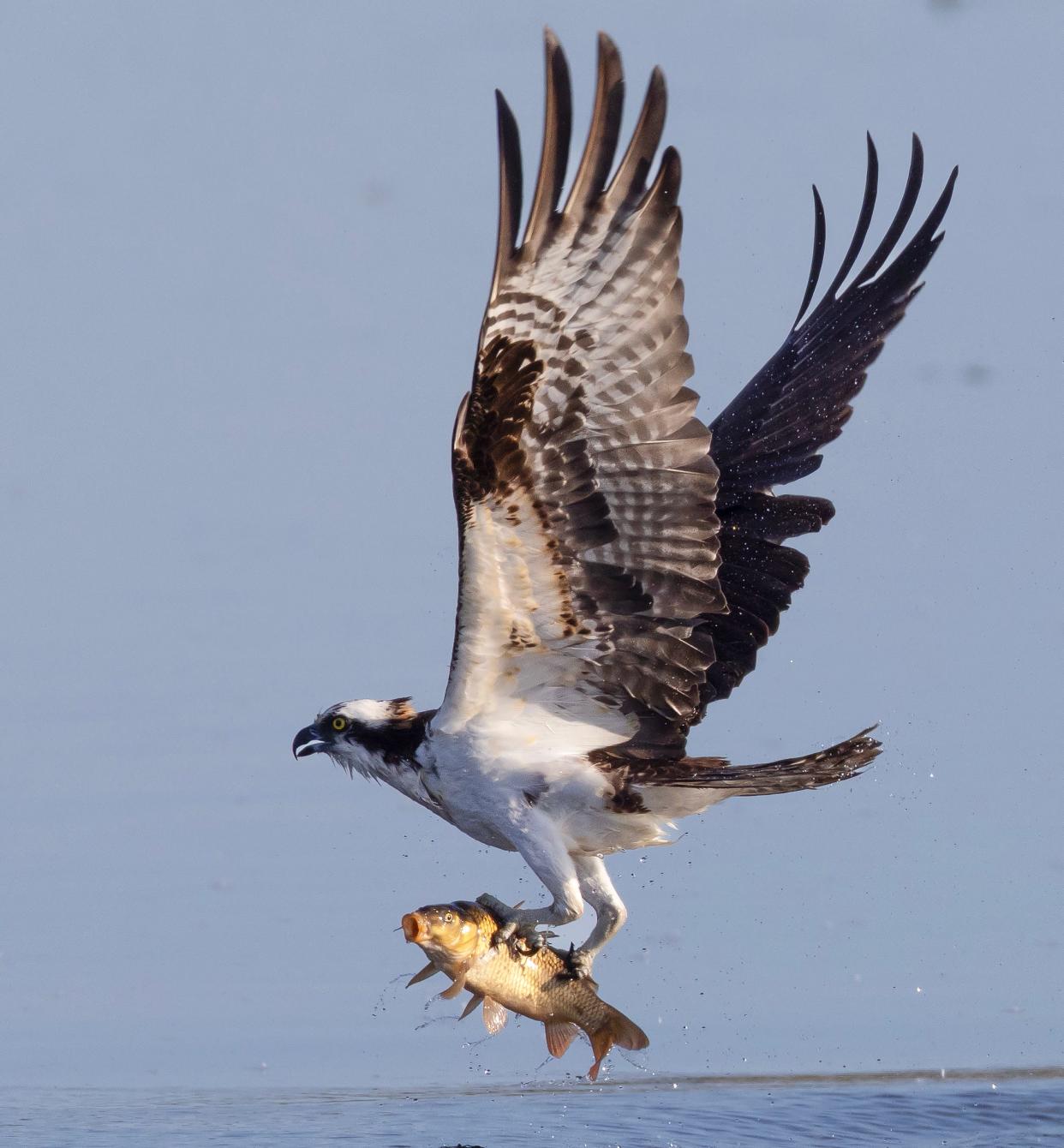Nature: Ospreys are flying fishermen

As the cheetah is to the gazelle, the osprey is to the fish. Imagine if you will, swimming peacefully in the isolation chamber calmness of the underwater world. Then, without warning, "Crash!" "Splash!"
Out of nowhere, a giant raptor's talons break the surface, seize you and next thing you know, you're high aloft and heading for a nest of baby ospreys. Fate: avian sushi.
Such is the fate of many Ohio fishes these days, but it was not always so. Ospreys are large raptors — “fish hawks” — that make their living entirely on fish. Pro bass fishermen have nothing on these raptors, which use methodology far more challenging than just casting a line.
A hunting osprey soars high over the water as it monitors the scaly crowd far below. When a potential target is spotted, the bird rows laboriously with its giant wings, awkwardly hovering in place. When all systems are go, the osprey tucks its wings and drops rapidly toward the water.
Nature: Black-necked stilts are stars at parks in Ohio
This plunge may begin 100 feet or more above the surface, but it takes only seconds for the osprey to reach the water. It plunges in feet-first and grabs the targeted fish with formidable talons. Fish can be mildly optimistic, though: Osprey success rate is usually only about 50%.
Watching hunting ospreys is always exciting, but osprey-watching for most of the 20th century was nearly nonexistent. While early literature reports fish hawks nesting in the 19th century, they had largely been vanquished by 1900, victims of indiscriminate shooting, habitat destruction and water-quality degradation.
The last documented early 20th-century nesting in Ohio was at Grand Lake Saint Marys in Mercer County in 1913. By the 1950s and ‘60s, a new threat was identified that affected ospreys over much of their range, which includes much of Canada and the U.S., as well as vast areas of Eurasia.
On Sept. 27, 1962, Rachel Carson’s book "Silent Spring" was released, raising awareness of pesticide contamination and helping forge a modern environmental ethos.

Jan. 20, 1969, saw the inauguration of our 37th president, Richard Milhous Nixon. In June of that year, the Cuyahoga River caught fire in Cleveland — for at least the 13th time. Public tolerance for polluters reached an all-time low.
A million citizens rallied in New York City in April 1970, demanding a cleaner environment.Earth Day was born.
Nixon made the environment a platform of his presidency and created the EnvironmentalProtection Agency (EPA) by executive order in 1970. The EPA promptly dealt with the most egregious threats, including banning the agricultural pesticide DDT, which had leached into the food web.
Carson’s book, "Silent Spring," documented the dangers of this compound, which causes reproductive failure in birds of prey and is toxic to numerous aquatic organisms.
Nature: Luna moths attract attention of many
By the 1972 DDT ban, many raptors had suffered major declines, including the bald eagle, peregrine falcon and osprey. Between 1950 and the 1970s, osprey populations declined by 90% in some regions.
As DDT gradually purged from the environment, birds of prey increased. Eagles and falcons are now probably at or near pre-DDT levels. The osprey is another conspicuous success story. As elsewhere in the country, Ohio’s osprey population is flourishing.
Over 200 nesting pairs of ospreys now call the Buckeye State home, and sightings are commonplace. The upper end of Alum Creek Park Reservoir, off Hogback Road, supports nesting pairs on conspicuous platforms erected by longtime osprey advocate Dick Tuttle and colleagues.
Pickerington Ponds Metro Park also hosts a nesting pair, and other nests are scattered around Franklin County. The “fish hawks” are back with a vengeance, terrorizing fish and delighting birders.
Naturalist Jim McCormac writes a column for The Dispatch on the first and third Sundays of the month. He also writes about nature at jim mccormac.blogspot.com.
This article originally appeared on The Columbus Dispatch: Nature: A fisherman in the air, ospreys take what they can

